
Recently, Montreal has been trying to differentiate itself from other North American cities by making itself as green and walkable as it can. One of the latest additions in town to this end is the Falaise Walking and Cycling Path, a longitudinal park created on the long neglected Saint-Jacques Escarpment in the west of the city.
On a summer’s Saturday morning I paid a visit, and was I surprised by what I discovered? I was a bit.
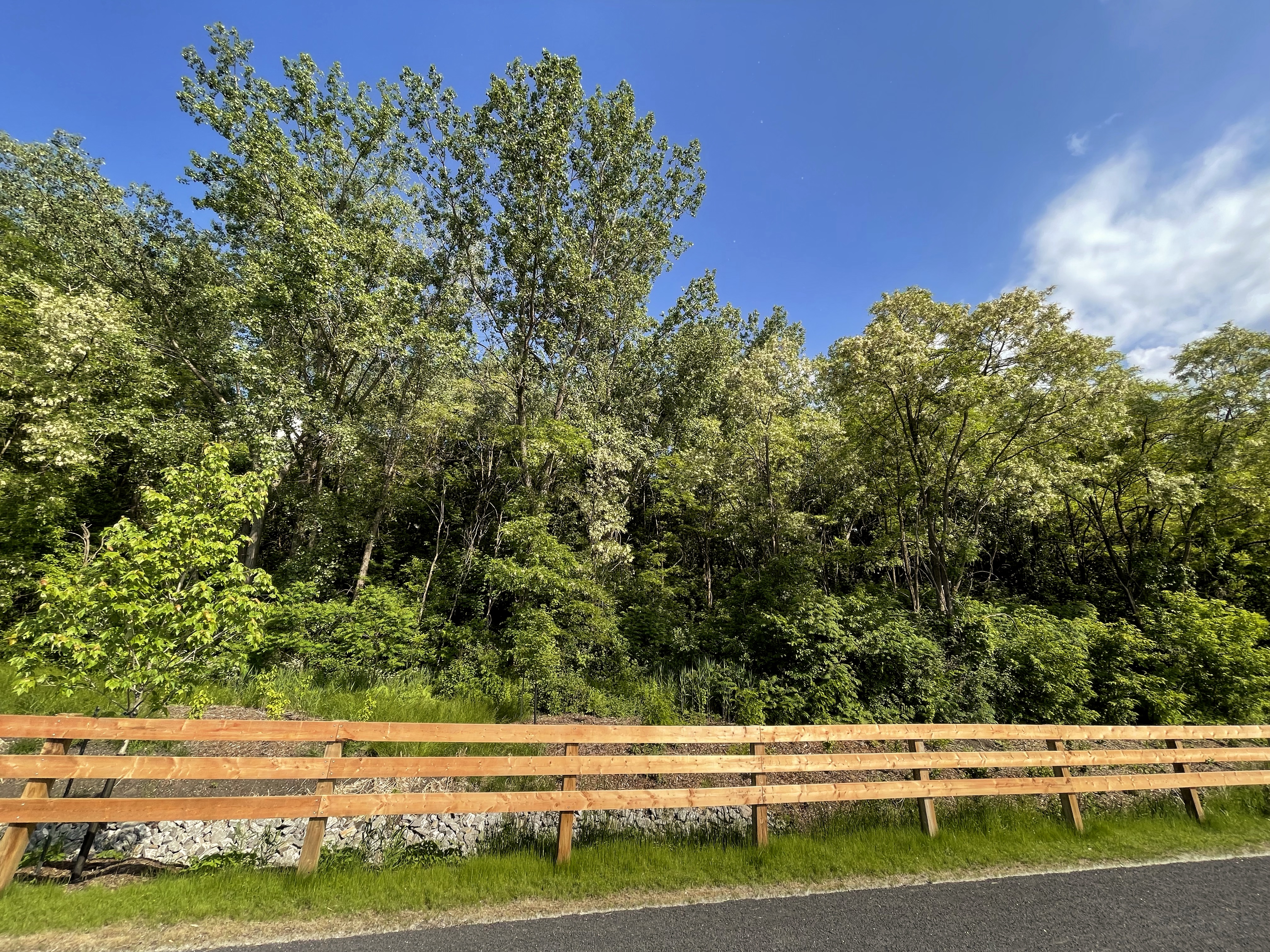
The escarpment itself was for many years a dumping ground. Located as it was with a railway line and highway on one side, and a cliff on the other, it wasn’t particularly accessible, and likely wasn’t even a pleasant place to visit.
Local journalist Andy Riga wrote about it back in the day for the Montreal Gazette. Whilst the article isn’t on the Gazette’s website (they don’t seem to be great at digital preservation) his walk through the escarpment from 2007 is still preserved online.
The full story is worth a read, as it’s a well researched telling of the escarpment’s history and relays the writer’s experiencing traversing what was a literal urban jungle. He starts out by saying:
As I lost my balance and my sandalled feet slipped down the hill, I grabbed for a branch, any branch – the wrong branch, it turned out. It was covered in thorns, one of which remained wedged in my right thumb.
I’m pleased to say today, 15 years later things are quite different. After a push for preserving the green space against threats such as highway expansions, the city stepped in and purchased the land with an aim to turn it into an urban park. And it’s genuinely delightful, so let’s go and explore it.

Whichever end of the park you approach it from, you’ll find a pagoda along with seating from which to shelter from the sun. As we’re coming from the west, you’ll be greeted with a nice view of the park from the peak.
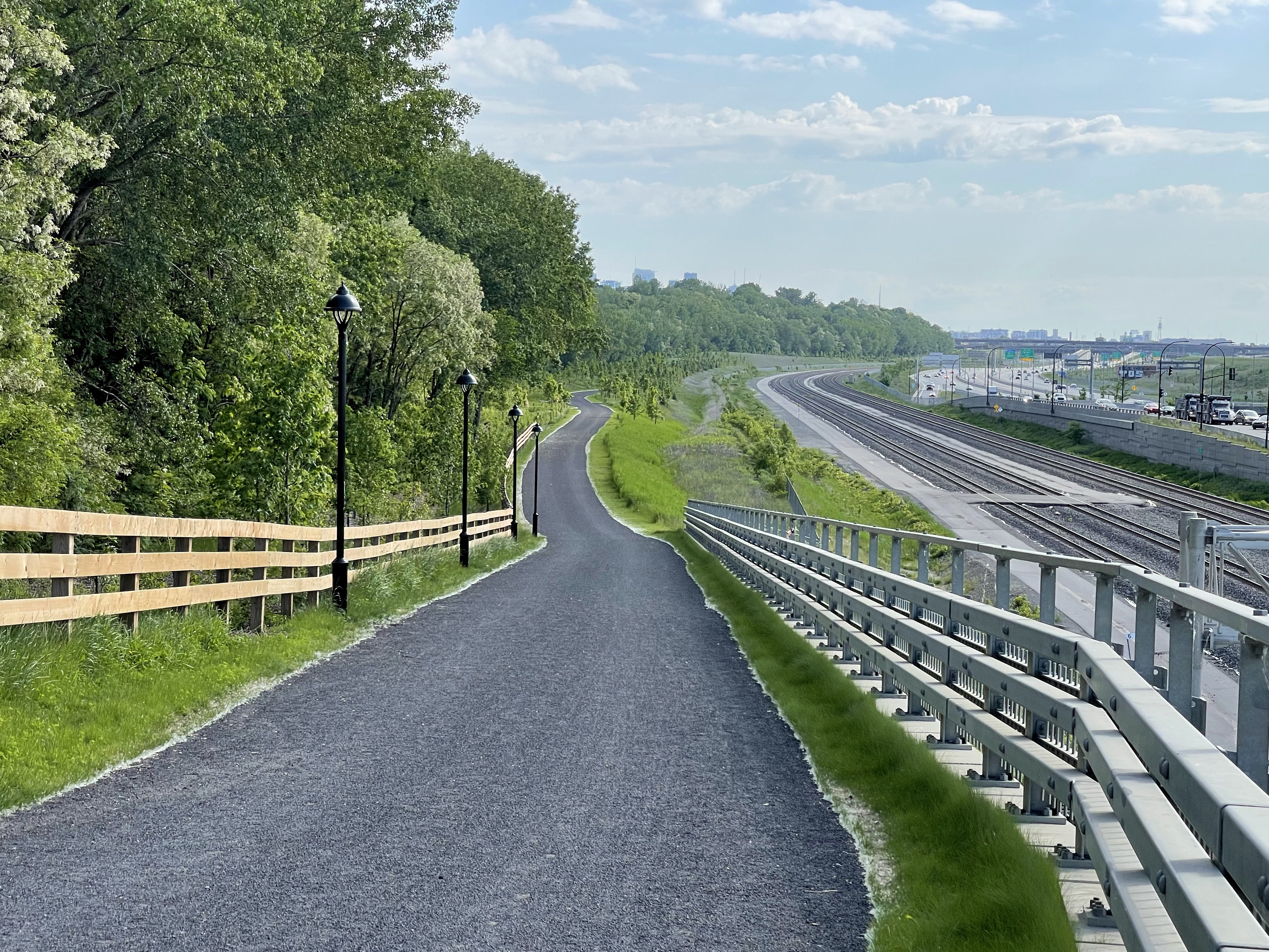
A lot of effort has gone into the conservation aspect of the park, and so you’ll see lots of bird houses and insect hotels dotted around. There’s also ample seating as well as a number of picnic tables so you can take your time to explore the route.
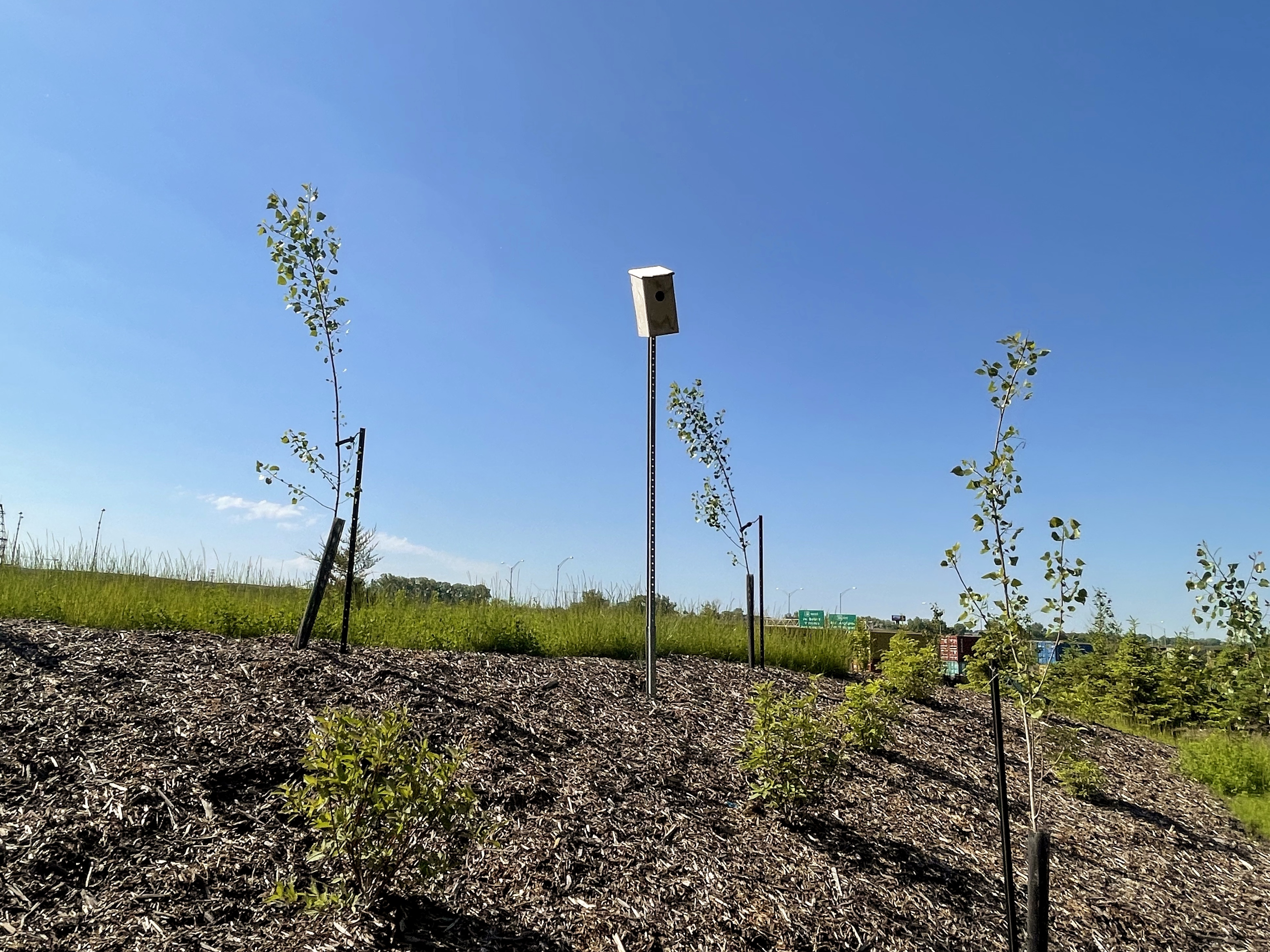
Although the park parallels the highway, it’s far enough away that the noise is less intrusive than one might expect. It’s also right next to one of the busiest rail corridors in the city, so if you’re a railfan or just find it relaxing to watch the trains go by, you’ll have great vantage points to observe plenty of freight as well as Via Rail trains heading to other parts of this giant country such as Ottawa and Toronto.
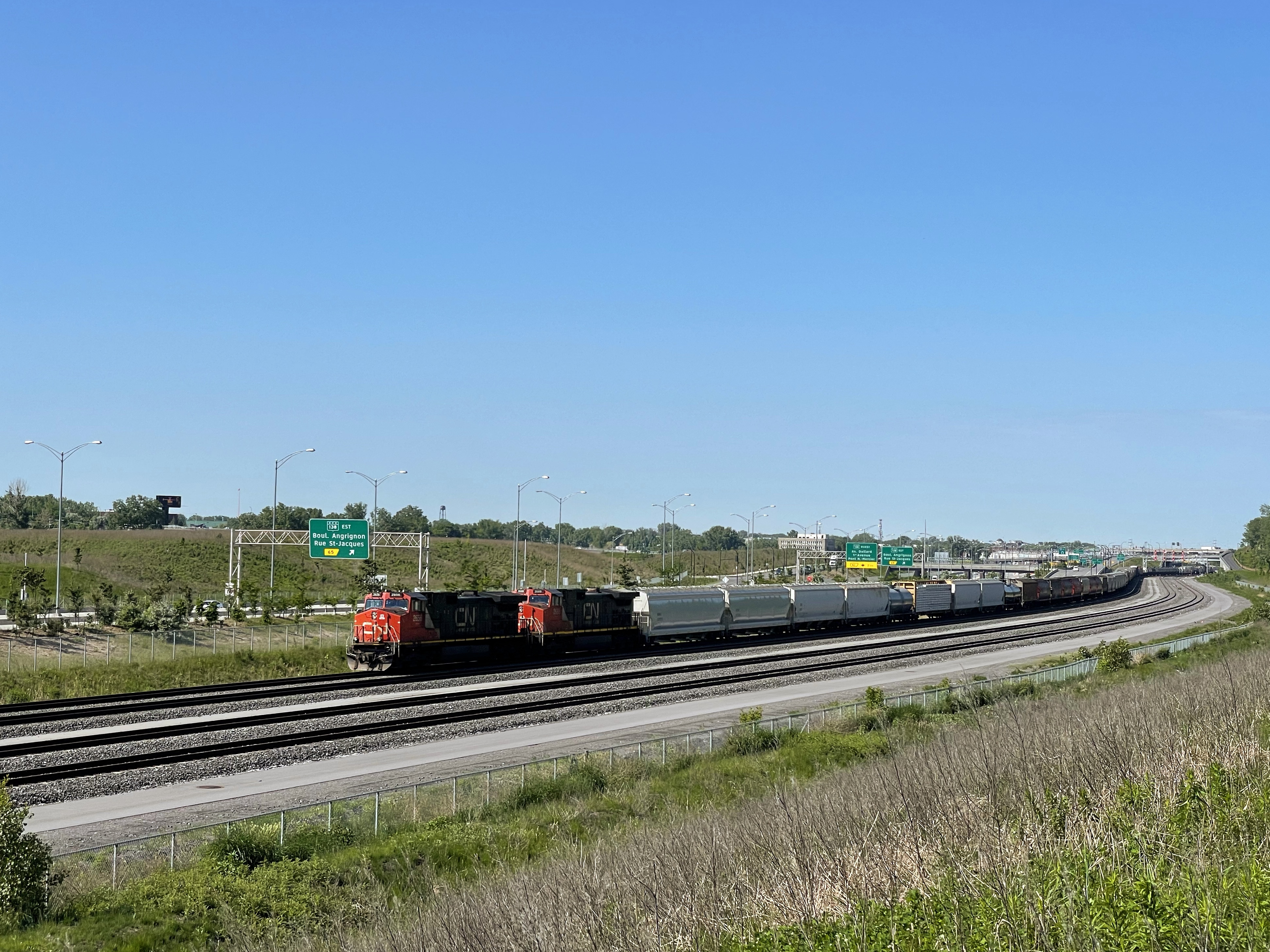
I did notice around half way along the park, there seemed to be an exit onto an access road which appeared to head up to Benny Farm. I didn’t go explore it, but I’d be curious to know if this provides an additional access point up to the heart of Montreal’s NDG neighbourhood.
I haven’t mentioned cycling yet, which I should because this park is also a cycle route connecting Montreal West with NDG, and the bike infrastructure at the ends of the parks is of a high quality and physically separated from traffic. If you’re a cycling commuter in the area, you may want to look at upgrading your route.

I’ve only a couple of criticisms, and both of them are outside of the city’s control, so please take them with a couple of pinches of salt.
Firstly, right now there’s not a lot of shade, so if you’re walking this during the summer months be aware you’ll want a hat and generous amounts of sunscreen. However, in the future all those newly planted trees will have grown to provide ample coverage and no doubt make the walk even more pleasant. If I’m still living in Montreal in a decade – and still alive – I promise to pay another visit.

Secondly, you might not know it but the park is a stones-throw from the historic Lachine Canal which lies just south of the highway. It’s always been hard to move between the two sides of the highway if you’re not in a car, but I do believe the cycle routes will get you there from either end of the park, and so that means it should be walkable too.
Lamentably, when the Quebec government rebuilt the nearby Turcot interchange they were supposed to build a pedestrian and cycle bridge connecting the two sides of the highway with the park. Unfortunately, the highway is the jurisdiction of the province and they decided there wasn’t benefit in following through on the promise, in spite of the massive amount spent on rebuilding the highway interchange. My hope is the project isn’t dead, and the city will yet find a way to work with the province – for highways are managed at the provincial level – to make it happen.
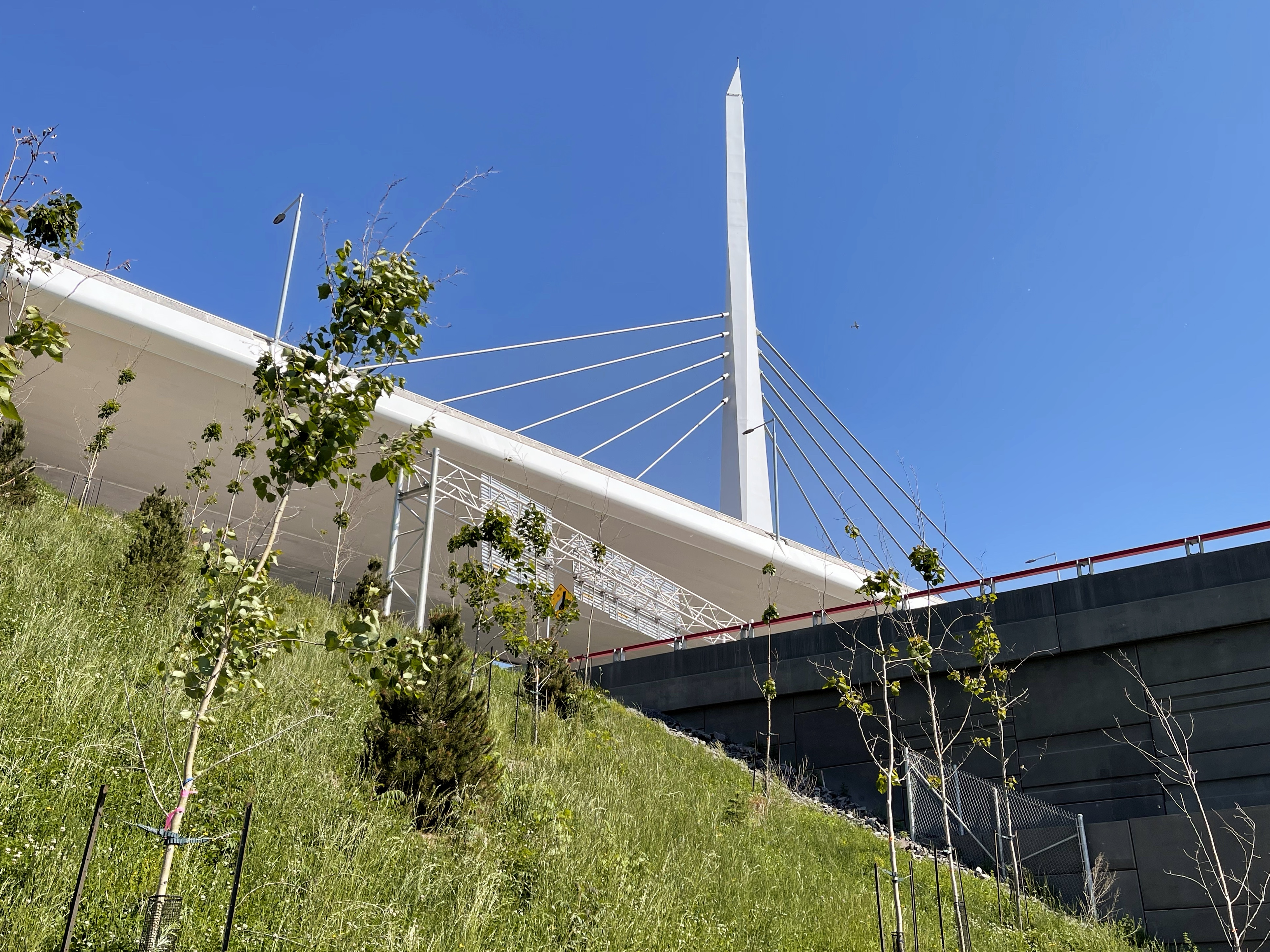
Conclusion
At the start of this post I said I was surprised by what I found. In my experience, interesting places outside of the area served by the Metro system can be hard to explore without driving there.
And so one of the unexpected things about this path is you can walk it end-to-end separated from traffic – save a few crossings – between two transit hubs. You can start the walk at Vendôme station, or as I did at Montreal West station. Both are served by exo trains, numerous local buses and, in the case of Vendôme, be the Metro as well.
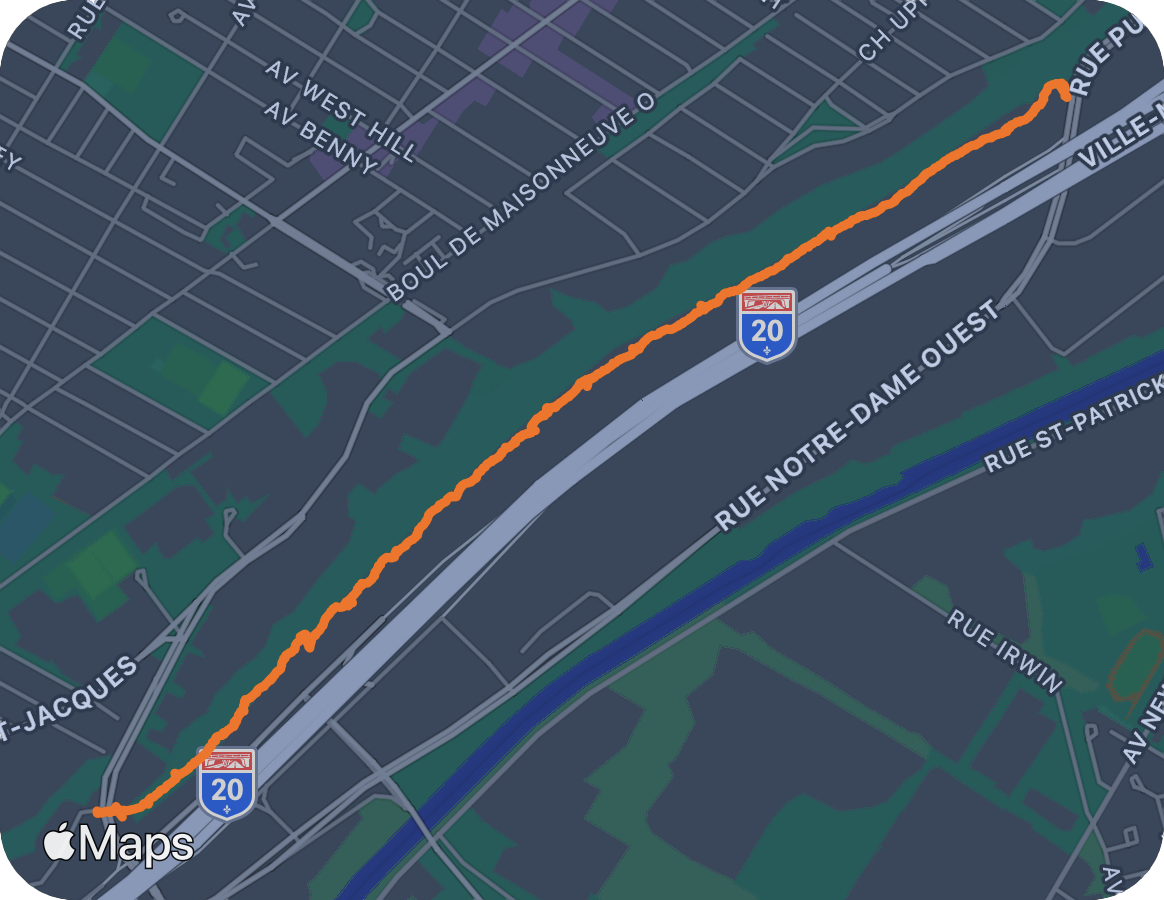
Montreal under its current administration has been on a mission to preserve or reclaim the city’s green spaces. This mission seems to range from planting trees and re-wilding neighbourhood parks, preserving existing areas of greenery to make green corridors linking parts of the city (as in the case here) as well as eco mega-projects such as the Grand Parc de l’Ouest, which once complete will become the biggest urban park in Canada.
The original idea for this park might be attributable to Jean Drapeau, but all these decades later it’s great to witness a vision realised for everyone to enjoy.
Getting There
- From Vendôme: Vendôme is served by the Metro’s Orange Line and exo trains as well as numerous bus routes. To find the path, follow directions for the Montreal Children’s Hospital and come out on Declarie Boulevard. Head South and cross over Saint-Jacques street to find the cycle path zig-zagging down the escarpment.
- From Montreal West: Whilst Montreal West is served by three exo lines, the trains aren’t very frequent, so a better option is to take the 52 bus which runs at least every 10 minutes and connects with the Metro at both Snowdon and Laurier. To find the path, head south on leafy Brock Street and follow it until it intersects with Sainte-Anne de Bellevue Boulevard.
